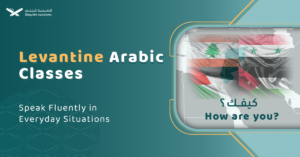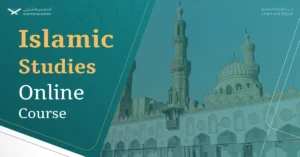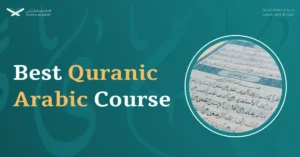Curious about the remarkable history of the Quran, the final divine guidance for humanity? Do you question how this sacred text has been preserved flawlessly, unlike the distortions seen in earlier scriptures?
In this article, we reveal the essential phases that demonstrate how Almighty God fulfilled His promise:
“It is certainly We Who have revealed the Reminder, and it is certainly We Who will preserve it.” (Q, 15:9)
To truly grasp this fascinating topic, it’s crucial to understand that the Quran’s preservation relies primarily on oral transmission. From the time of Prophet Muhammad (PBUH) until today, an unbroken chain of authorized memorizers has safeguarded its content, certified through rigorous systems of ijazah (certificates of reading). While written manuscripts play a secondary role, Muslims developed innovative and meticulous methods to ensure the authenticity of accepted copies, guided by principles derived from the Quran itself.
Stay with us as we delve into the pivotal phases in the Quran’s history, beginning in the Prophet’s era and continuing through the generations!
The History Of The Quran:
To begin with, the history of the Quran can be summarized in the following key phases, as preserved by the divine promise through the Muslim nation from the Prophet’s time to the present day, ensuring the continuity of this miraculous book:
- Primary Oral Preservation & ijazah system since Prophet’s Time: The Quran was preserved primarily through oral transmission, with a multitude of narrators forming an unbroken chain from the Prophet (peace be upon him) to thousands of Muslims today embodied in certificates of reading called ijazah.
- Written Preservation: The process of documenting the Quran began during the Prophet Muhammad’s lifetime, with scribes recording divine revelations under his supervision and authority.
- Abu Bakr’s Official Compilation: During the caliphate of Abu Bakr, all scattered first-hand manuscripts were compiled into a single collection, supported by a wide range of memorizers and subjected to rigorous verification methods.
- Uthman’s Standardization of the Manuscript: Under the caliphate of Uthman, the Quran was standardized based on strict methods and multiple copies were distributed to various regions of the expanding Muslim nation, accompanied by official reciters to ensure uniformity.
- Aesthetic Development for Easier Acces: such as puting separators, dots, diacritical marks and division of portions.
Let’s tackle these key phases in detail:
Phase 1: Quran Oral & Written Preservation During The Prophet’s Life
During the time of Prophet Muhammad (PBUH) and the revelation that started on Monday, August 10th, 610 AC, the Quran’s preservation primarily relied on oral transmission. However, the process of documenting and safeguarding the Quran in written form began early in the period of divine revelation and continued until the last verse was revealed. This effort was overseen by the Prophet himself, who ensured accuracy by having official scribes read back to him what they wrote based on his dictation.
Zayd ibn Thābit, one of the official scribes during the Prophet’s time, reported:
“We were with the Messenger of Allah (PBUH) collecting the Qur’an from parchments.”
[Authentic Hadith: Narrated by At-Tirmidhi & Ahmad]
Below is an outline of the Quran’s history and the process of its compilation during the Prophet Muhammad’s lifetime:
Revelation of the Quran in Stages
Unlike previous scriptures, Almighty God revealed the Quran in stages over 23 years. This method ensured the guidance was timely, addressing the events and needs of the Muslim community. The Quran itself highlights this gradual revelation:
“˹It is˺ a Quran We have revealed in stages so that you may recite it to people at a deliberate pace. And We have sent it down in successive revelations.” [Q., 17:106]
The Prophet’s Role After Receiving Quran Revelation
When Prophet Muhammad (PBUH) received a portion of divine revelation, he conveyed it to his companions. He taught them the meanings of the verses through his oral explanations and practical actions, ensuring a correct understanding. Almighty God described the Prophet’s role, stating:
“We [Almighty God] have sent down to you ˹O Prophet˺ the Reminder [Quran], so that you may explain to people what has been revealed for them, and perhaps they will reflect.” [Q., 16:44]
The Role of the Prophet’s Scribes in Quran Written Preservation
The Prophet’s scribes–estimated to be between 13 and 65 in Medina–included notable figures such as Zayd ibn Thābit, Abu Ayyub al-Ansari, and Abu Bakr As-Siddiq. Whenever a new revelation descended, the Prophet would summon one or more of these scribes and dictate the verses to them. Since the Prophet was unlettered, a characteristic common in his society and a testament to the Quran’s miraculous nature, he would have the scribes read back their writings to verify accuracy.
Moreover, some companions had personal manuscripts in which they wrote the revealed verses, often adding marginal notes and explanations, such as the Mushaf of Aishah. The recently discovered Sanaa palimpsest, found in 1972, is an example of a Quranic manuscript likely used by a learner for personal study. It contains some variations in letters and erasures, reflecting its informal use and not adhering to the rigorous methods employed in official Quranic writing.
Divine Instruction on Quran Verse Arrangement
The arrangement of Quranic verses did not follow a chronological order but was based on a unique divine structure. Angel Gabriel guided the Prophet on the placement of each verse within its respective chapter. Uthman ibn Affan, a companion of the Prophet, stated:
“When something came down to him (the Prophet), he would call one of those who wrote and tell him to put these verses in the chapter in which such and such is mentioned.”
[Sahih: Musnad Ahmad and At-Tirmidhi]
All Muslims unanimously agreed upon the arrangement of verses within chapters, as it was divinely instructed.
Annual Review of the Quran
To ensure continuous preservation, Angel Gabriel reviewed the Quran with the Prophet once every year during Ramadan. In the year of the Prophet’s passing, this review occurred twice. This annual review established the order of verses and excluded any abrogated recitations.
“The Prophet, peace and blessings be upon him, would review the Quran once every year in Ramadan, and he reviewed it twice in the year he passed away.”
[Sahih Al-Bukhari]
This final review, witnessed by several companions, served as a basis for the later compilation of the Quran.
Seven divine modes for recitation to make it easy
As the Quran began spreading to other Arab tribes, many of whom spoke dialects different from that of the Quraysh—the dialect in which the Quran was mainly revealed—the Prophet (PBUH) sought to ease the recitation for Muslims. He prayed to Almighty God for this facilitation, and the Quran was permitted to be recited in seven dialects.
Gabriel came to him (Prophet Muhammad) and said: “Allah has commanded you to make your community read (the Qur’an) in one harf (dialect). He (the Prophet) said: ‘I beg Allah His pardon and forgiveness; my community has not strength to do so‘. He then came for the second time and told him the same thing till he reached up to seven harfs. Finally, he said: ‘Allah has commanded you to make your community read (the Qur’an) in seven harfs; in whichever mode they read, that will be correct.” [Sahih Sunan Abi Dawud]
These seven modes are all divine and correct. They add variations and flexibility; no contradictions between them. They are not inserted by scribes or future narrators such as variations found in previous scriptures.
The Quran’s Presence in Muslim’s Hearts & Worships
The Quran was the core of learning environments, and it was used in prayers recited aloud by consensus regarding verse arrangement. It was memorized and valued by numerous people in society due to the numerous texts urging Muslims to learn the Quran and the exceptional memory of the Arabs, who, even before Islam, transmitted their knowledge through oral preservation.
To conclude, the Quran was preserved from the early time of prophethood through memorization by heart, supported by a written record maintained by many official scribes under the supervision of the Prophet, all verified through a divine review.
Still, there was no single compiled version gathering all the Quranic chapters; they were all written but in separate places by various scribes. Since a large number of memorizers preserved the Quran, there was no immediate need for such a step. However, this situation changed, necessitating the compilation of one unified version of the Quran in the next phase of its history.
Read more about: WHO WROTE THE QURAN
Phase 2: Quran Compilation During Abu Bakr’s Time
Although the Quran was preserved both through memorization and written records, there was no unified single manuscript that gathered the entire Quran in one place. As Zayd ibn Thabit said: “The Prophet (PBUH) passed away, and the Quran had not yet been compiled into a book,” i.e., arranged in a single manuscript. Following are the reasons and methods taken for the Quran compilation during Abu Bakt time as an important step in Quan history:
Reasons for Quran Compilation During Abu Bakr’s Time
After the martyrdom of many Quran memorizers during the Battle of Yamamah, the companions feared the potential loss of the Quran. Umar ibn Al-Khattab consulted the Caliph Abu Bakr about compiling the manuscripts written during the Prophet’s (ﷺ) time into one unified copy. Umar said:
“The fighting inflicted many casualties among the reciters of the Qur’an on the Day of Al-Yamamah, and I fear that there will be more casualties among the reciters in other parts of the land, such that much of the Qur’an may be lost. In my view, you should order that the Qur’an be collected.” [Sahih At-Tirmidhi]
How the Quran Was Compiled During Abu Bakr’s Time
The process of compiling the Quran during Abu Bakr’s time involved several rigorous steps and methods:
1. Deliberations Among the Companions concerning the Quran Compilation
Umar repeatedly consulted and convinced Abu Bakr of the critical need to compile the Quran to preserve the religion. Initially hesitant since this action was not undertaken during the Prophet’s (ﷺ) time, Abu Bakr eventually agreed. He narrated:
“Abu Bakr said to ‘Umar: ‘How can I do something which was not done by the Messenger of Allah (ﷺ)?’ ‘Umar said: ‘By Allah! It is something good.’ ‘Umar continued trying to convince me until Allah opened up my chest to that which He had opened the chest of ‘Umar, and I saw it as he saw it.”
2. Selection of Zayd ibn Thabit for the Mission
Zayd ibn Thabit was chosen for the task due to his exceptional credentials. Abu Bakr explained:
“You are a young, wise man, and we have no suspicions about you. You used to write down the Revelation for the Messenger of Allah as the Qur’an was revealed.”
Zayd himself acknowledged the weight of this responsibility, saying:
“By Allah! If they had ordered me to move one of the mountains, it would have been lighter on me than that.” [Sahih At-Tirmidhi]
3. Announcement for Eligible Participants in Quran Compilation
An official decree was issued, calling upon individuals with firsthand manuscripts of the Quran written in the Prophet’s (ﷺ) presence to submit them.
4. Strict Authentication Methods for Quran Preservation
Manuscripts were only accepted if their holder could provide two witnesses proving the text was written during the Prophet’s (ﷺ) lifetime, rather than relying solely on memory. Abu Bakr instructed Umar and Zayd:
“If anyone brings you a verse from the Book with two witnesses, then record it.”
The renowned scholar Ibn Hajar commented on this method, stating:
“The intention was to accept only what had been written in the Prophet’s (ﷺ) presence, not relying on one’s memory alone.”
5. Verification of Written Quranic Manuscripts Against Memorization
Accepted manuscripts were cross-verified with the memories of Quran memorizers. Zayd described the process:
“So I gathered it from various parchments, pieces of bone, and the chests of men, i.e., their memories.”
This national effort ensured that no portion of the Quran was left unauthenticated under the authority of all the memorizers, not limited to a few group of scribes.
The Outcome of the Compilation
Under the authority of Caliph Abu Bakr, Zayd successfully compiled all verified Quranic manuscripts into a single volume using rigorous methods. This compilation was preserved in the state archive under Abu Bakr’s custodianship. After Abu Bakr’s death, the volume was entrusted to his successor, Umar ibn Al-Khattab. Umar played a significant role in preserving the Quran, spreading memorizers and teachers across the growing Muslim nation to ensure its preservation and dissemination.
Phase 3: Quran Standardization During Uthman’s Time
The third phase of the Quran history was made under the authority of Caliphate Uthman b. Affan, the third Caliphate of the Muslim nation after more than ten years after the Prophet’s death. Following are the reasons and methods taken for this significant project:
Reasons for Uthmani Standardization
After the spread of Islam to non-Arab nations, many non-Arabs embraced the religion. Their foreign tongues, combined with the permissible use of the seven ahruf (dialects) for Quranic recitation, which Prophet Muhammad (peace be upon him) requested from Almighty God to ease recitation for various Arab tribes, led to challenges. Some conflicts arose among Muslims over differences in recitation, compounded by the influence of foreign accents on certain words. Over time, tribal affiliations risked fostering the belief that one dialect was superior to others.
Hudhayfah ibn al-Yaman, a companion of the Prophet, witnessed disputes regarding pronunciation and feared that such disagreements could escalate, potentially affecting the preservation of the Quran. He approached Caliph Uthman ibn Affan, urging action. Recognizing the gravity of the situation, Uthman and the companions agreed on the necessity of standardizing the Quran.
How Was Quran Standardization Accomplished?
To fulfill the project of standardization, caliphate Uthman takes the following method:
1. Preparation Using First-Hand Copies
Uthman based the standardization project on the original manuscripts prepared during the lifetime of Prophet Muhammad (peace be upon him). These manuscripts were dictated in the Prophet’s presence, ensuring their accuracy.
2. Appointment of a Committee
Uthman appointed a qualified committee of 12 companions, including Zayd ibn Thabit, a scribe of the Prophet who had also participated in the earlier compilation of the Quran during the caliphate of Abu Bakr.
3. Official Writing in the Quraishi Dialect
The Quran was primarily revealed in the Quraishi dialect, the language of the Prophet’s tribe. The other dialects requested by the Prophet were a facilitation for early Arabs from various tribes. However, to avoid disputes, Uthman standardized the text in the Quraishi dialect, based on the main revelation. For example, when the companions differed on how to write the word “تابوت”—whether with a closed tāʾ (تابوة) or an open tāʾ (تابوت)—they chose to write it according to the Quraishi dialect, using the open tāʾ.
Umar ibn al-Khattab had earlier instructed:
“The Quran was revealed in the dialect of Quraish, so teach it according to the dialect of Quraish and not that of Hudhail.”
Commenting on this, Ibn Hajar states:
“For a non-Arab Muslim who desires to read the Quran, the most auspicious choice is to read according to the Quraishi dialect. That is best for him [as all Arabic dialects would be equally challenging for him].”
4. Undotted Manuscript for All Modes of Recitation (Qiraat)
Although the dot system existed in Arabic writing before Uthman’s time, he chose an undotted script for the standardized manuscript. This allowed the inclusion of all accepted modes of recitation (qiraat), which reflect divine variations in some Quranic words. These variations include differences in grammatical indicators, consonants, nouns (e.g., singular, dual, or plural forms), and slight additions or omissions in line with Arabic customs and dialectical peculiarities–all are divine and back to the revelation dictated by Prophet Muhammad (PBUH).
Later on, the drawing of the Quran includes dots to facilitate it for the Muslim nation.
5. Verification Against Abu Bakr’s Compilation
For accuracy, Uthman and the committee rigorously compared the standardized version with the earlier compilation made during Abu Bakr’s time primarily enhanced by the large number of memorizers. Any slight variations in the script were amended accordingly.
6. Destroying Informal Manuscripts
To prevent the circulation of unofficial manuscripts, which might include marginal notes or discrepancies, Uthman ordered the burning of all non-standard manuscripts. This step united Muslims on a single standard version.
7. Copying and Distribution of Standardized Versions
Uthman sent copies of the standardized Quran to various regions, each accompanied by a qualified reciter. He also issued instructions for its proper use, ensuring that the Quran was learned and recited accurately across all regions.
By standardizing the Quran and sending copies to different parts of the Muslim world, Uthman played a crucial role in the preservation of the Quran, fulfilling Almighty God’s divine promise of its protection.
Phase 4: Aesthetic Development In Quran Script For Easier Acces
After the caliphate of Uthman, efforts were made–throughout generations–to facilitate the Quran’s accessibility for the growing Muslim nation. Among these contributions were:
- Verse separators
- Chapter separators
- Reading aids, such as dots and diacritical marks
- Symbols for dividing the Quran into thirty portions (30 Juzʾ)
It is important to note that these developments are purely aesthetic and do not alter the Quran’s essence as a miraculous book rooted in an oral learning tradition.
Unlock the Path to Quranic Mastery with Shaykhi Academy!
Are you seeking the finest Quranic education right from the comfort of your home? Look no further! Shaykhi Academy stands out as a premier online Quran learning platform, dedicated to providing exemplary education to both children and adults.
Why Choose Shaykhi Academy?
- Connect with highly qualified native tutors.
- Flexible scheduling to suit your busy lifestyle.
- Affordable classes tailored for all levels.
- Accessible from anywhere around the globe.
Discover Our Range of Courses:
- Arabic Noorani Qaida: Lay a solid foundation for Quranic studies.
- Online Quran Classes for Kids: Engaging lessons for lifelong learning.
- Tajweed Rules for Kids: Learn to recite with confidence.
- Quran Hifz for Kids: Step-by-step guidance to memorize the Quran.
- Quran for Adults: Introduce yourself to Quran reading and Tajweed rules.
- Online Arabic Courses: Master the language of the Quran.
- Islamic Studies: A wide range of topics related to Islam, including theology, law, Quranic studies, Hadith.
Don’t Miss Out on Your Chance to Excel!
Whether you’re a beginner or seeking advanced knowledge, Shaykhi Academy can guide you! Book your free trial now!

Conclusion
To conclude, the cornerstones of the Quran’s history can be summarized in the following key periods, with later efforts building upon them:
- Upon revelation to Prophet Muhammad PBUH (610 AC): Oral and written preservation worked together under the direct supervision of the unlettered Prophet, ensuring accuracy and authenticity.
- During the caliphate of Abu Bakr (632–634 AC): All official manuscripts of the scattered chapters were compiled into one collection, following strict and meticulous rules.
- During the reign of Uthman (644–655 AC): The Quran underwent a standardization process, with official copies distributed to different regions to ensure uniformity in recitation and script.
As a living, present book, the Quran continues to be memorized by millions of Muslims throughout history, transmitted through a verified chain of narrators, and recited in daily prayers. This enduring preservation fulfills the divine promise to safeguard the Quran as guidance for humanity until the end of time, emphasizing its role as the final message from God.
These previous givings make the possibility of distortion or innovation in the Quran impossible for no manuscripts or narrations can be accepted unless the following conditions are met:
- A multitude of narrations tracing back to the Prophet (peace be upon him), ensuring recitational authenticity and certainty.
- Conformity with what is found in the Uthmani Mushaf.
- Agreement with Arabic grammar.
Now, moving beyond theoretical discussions, we invite you, dear reader, to read the Quran with a reflective heart and mind to discover the ultimate truth. Start your journey of discovering and reading the Quran today!
References:

















































